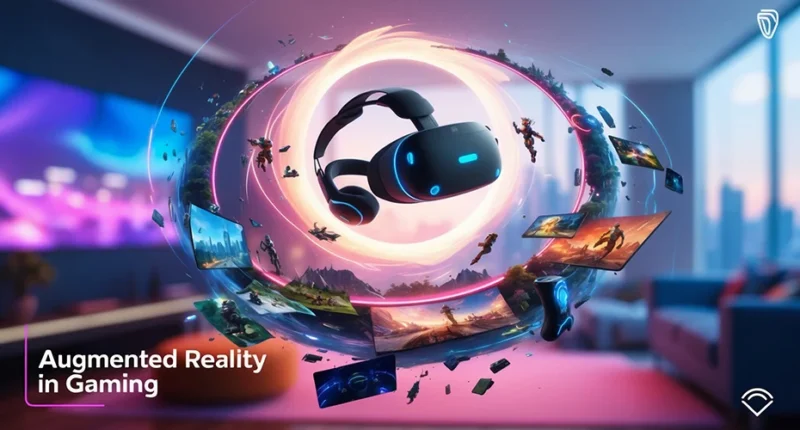Table of Contents
Augmented Reality (AR) has come a long way in the last few years. What once seemed like a futuristic concept is now part of our daily lives, especially in gaming and other industries. AR uses technology to overlay virtual images, sounds, or information on the real world, creating an interactive experience. It’s exciting to see how AR has evolved and where it’s headed next.
AR in Gaming: Changing the Rules of Play
AR made a massive splash in gaming with the release of Pokémon GO in 2016. This mobile game encouraged players to explore their neighborhoods to catch virtual Pokémon that appeared in real-world locations. It was a global sensation and showed how AR could bring gaming into our everyday surroundings. Pokémon GO wasn’t just fun; it was a breakthrough in blending digital and physical spaces.
Since then, AR in gaming has continued to grow. Games like Minecraft Earth and AR-based escape rooms have used similar technology to immerse players in creative and interactive environments. Players no longer need to sit in front of a screen; they can walk around and experience games in real life, interacting with their surroundings in new ways.
Beyond Gaming: AR in Everyday Life
While gaming may have introduced AR to many, the technology is finding uses far beyond entertainment. Here are a few ways AR is shaping different industries:
1. Shopping and Retail
AR is transforming how we shop. Apps now let you try on clothes, shoes, or even makeup virtually without stepping into a store. IKEA’s AR app, for example, lets customers see how furniture would look in their homes before buying. This makes shopping easier and more fun.
2. Education and Training
In education, AR is helping students learn in exciting ways. Imagine pointing your phone at a page in a textbook and seeing a 3D model pop up, explaining a concept in detail. For professionals, AR is being used for training. Medical students can practice surgeries using AR simulations, and engineers can explore complex designs in 3D before starting a project.
3. Healthcare
In healthcare, AR is used to improve surgeries and patient care. Surgeons can use AR tools to see a 3D image of a patient’s body during operations, making procedures safer and more accurate. AR is also helping physical therapists guide patients through exercises with interactive tools.
4. Real Estate
AR is making house-hunting easier. Instead of visiting every property, potential buyers can take AR-based virtual tours to see how a space looks and feels. This saves time and helps buyers make better decisions.
5. Travel and Tourism
Tourism is another area benefiting from AR. Imagine visiting a historic site and using an AR app to see how the location looked hundreds of years ago. Museums are also using AR to make exhibits more interactive and engaging.
The Technology Behind AR
For AR to work, it needs devices like smartphones, tablets, or AR glasses. These devices use cameras, sensors, and software to map the real world and add virtual elements. Over time, AR technology has become more advanced and accessible, making it easier for developers to create apps and experiences.
The rise of AR glasses, such as Microsoft HoloLens or the rumored Apple AR headset, could take AR to the next level. These devices will allow users to interact with AR without needing to hold a phone, making the experience more natural.
What’s Next for AR?
The future of AR is full of possibilities. With faster internet speeds from 5G, AR experiences can be more detailed and responsive. AR could be used in areas like virtual meetings, fitness, home improvement, and even social media filters.
One big goal for AR is creating a seamless connection between the virtual and real worlds. Developers are working on making AR more realistic, with better graphics, sound, and interactions.
Conclusion
The journey of AR has been remarkable, starting from gaming and expanding into various parts of our lives. Whether it’s making learning fun, improving healthcare, or enhancing shopping experiences, AR is changing the way we interact with the world. As the technology continues to grow, AR will become an even bigger part of our daily lives, opening up endless possibilities for creativity and innovation. It’s an exciting time to see what’s next for augmented reality!











